How to Build a CRUD App with Xamarin?
This guide will walk you through the creation of a complete CRUD (create, read, update, delete) application using Xamarin.
We will utilize Back4app as our backend service to effortlessly manage your data. Throughout this tutorial, you'll see how to configure a Back4app project, set up a flexible data schema, and implement CRUD operations in a Xamarin application.
Initially, you'll configure a Back4app project named Basic-CRUD-App-Xamarin. This project will serve as the robust backend for your application. You’ll define your data structures manually through the Back4app dashboard or leverage the built-in AI Agent.
Next, you will harness the intuitive Back4app Admin App to manage your data effortlessly via drag-and-drop functionality.
Finally, you will integrate your Xamarin app with Back4app using the Parse .NET SDK, which is fully compatible with Xamarin, ensuring secure and efficient data operations.
By the conclusion of this tutorial, you will have developed a production-ready Xamarin application capable of executing basic CRUD operations along with secure user authentication and data management.
- Learn how to construct a Xamarin-based CRUD app integrated with a robust non-relational backend.
- Understand how to design a scalable backend and connect it seamlessly with your Xamarin app.
- Discover how to manage CRUD operations using the Back4app Admin App.
- Explore options for secure user management and backend security using ACLs and CLPs.
Before you begin, make sure you have:
- A Xamarin development environment. Install Visual Studio with Xamarin support and ensure you have the latest .NET SDK.
- A basic understanding of C#, object-oriented programming, and REST APIs. You can review the Microsoft C# documentation if needed.
- Log in to your Back4app account.
- Click the “New App” button on your dashboard.
- Name your project: Basic-CRUD-App-Xamarin and follow the on-screen instructions to complete the setup.
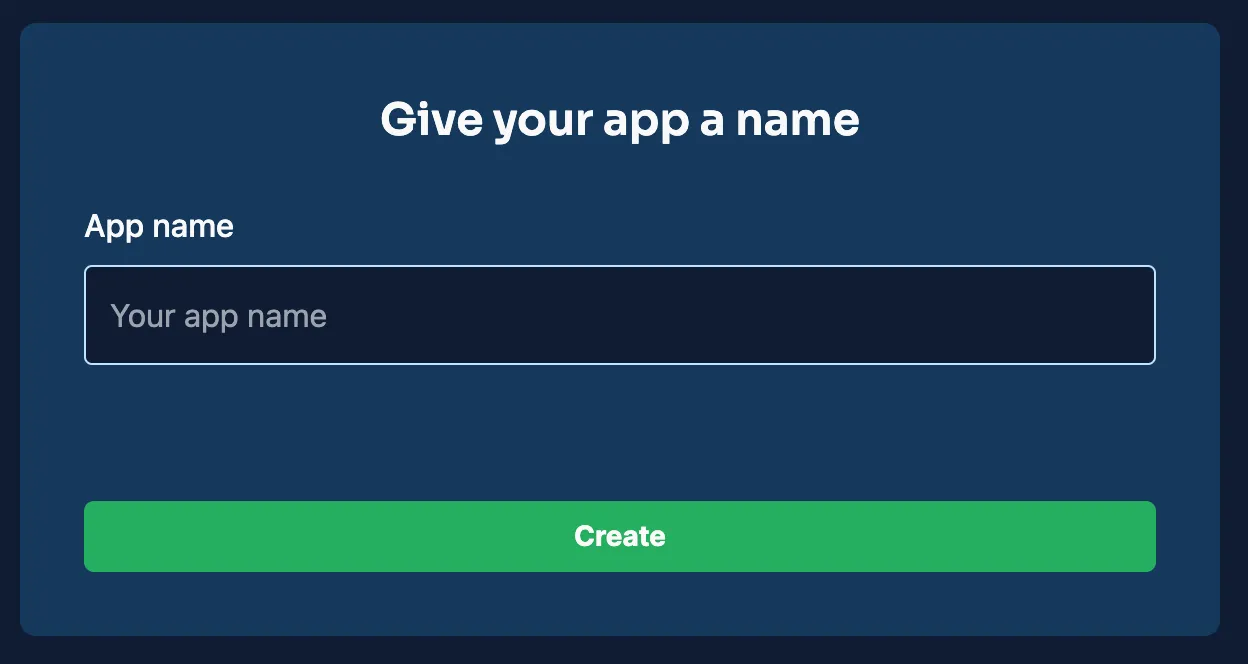
After your project is successfully created, it will appear on your dashboard, ready for further backend configuration.
For this CRUD application, you need to set up several classes (collections) in your Back4app project. Below are examples of the primary classes and their respective fields that you’ll create.
Field | Data Type | Description |
|---|---|---|
_id | ObjectId | Auto-generated unique identifier. |
title | String | The item’s name. |
description | String | A brief summary of the item. |
createdAt | Date | Timestamp marking creation. |
updatedAt | Date | Timestamp marking the last update. |
Field | Data Type | Description |
|---|---|---|
_id | ObjectId | Automatically generated unique ID. |
username | String | Unique username for the user. |
String | Unique email address for account contact. | |
passwordHash | String | Encrypted password for security. |
createdAt | Date | Account creation timestamp. |
updatedAt | Date | Timestamp for the last account update. |
You can add these classes and fields manually via the Back4app dashboard.
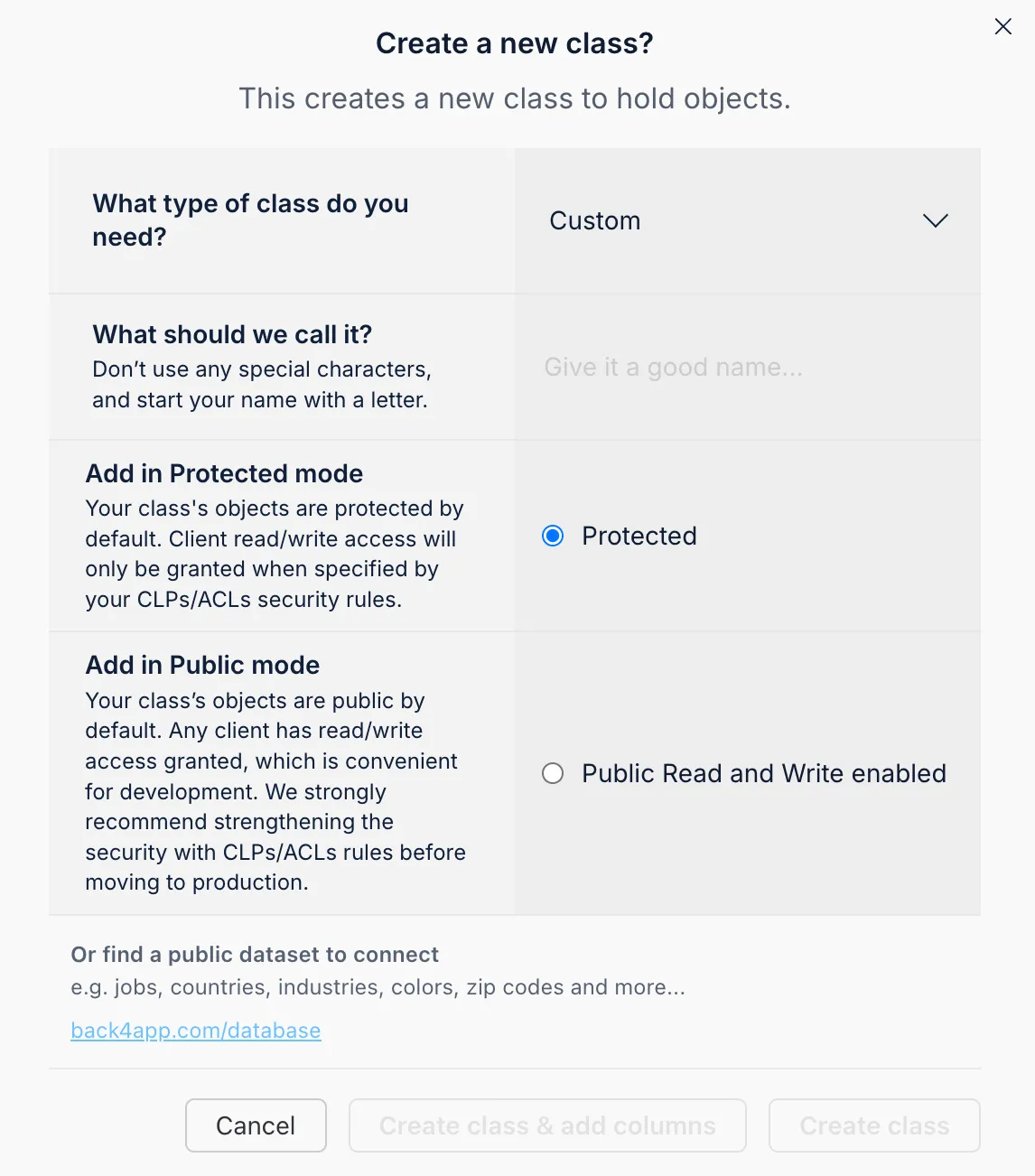
You can define each field by selecting a data type, entering the field name, setting default values, and marking mandatory fields.
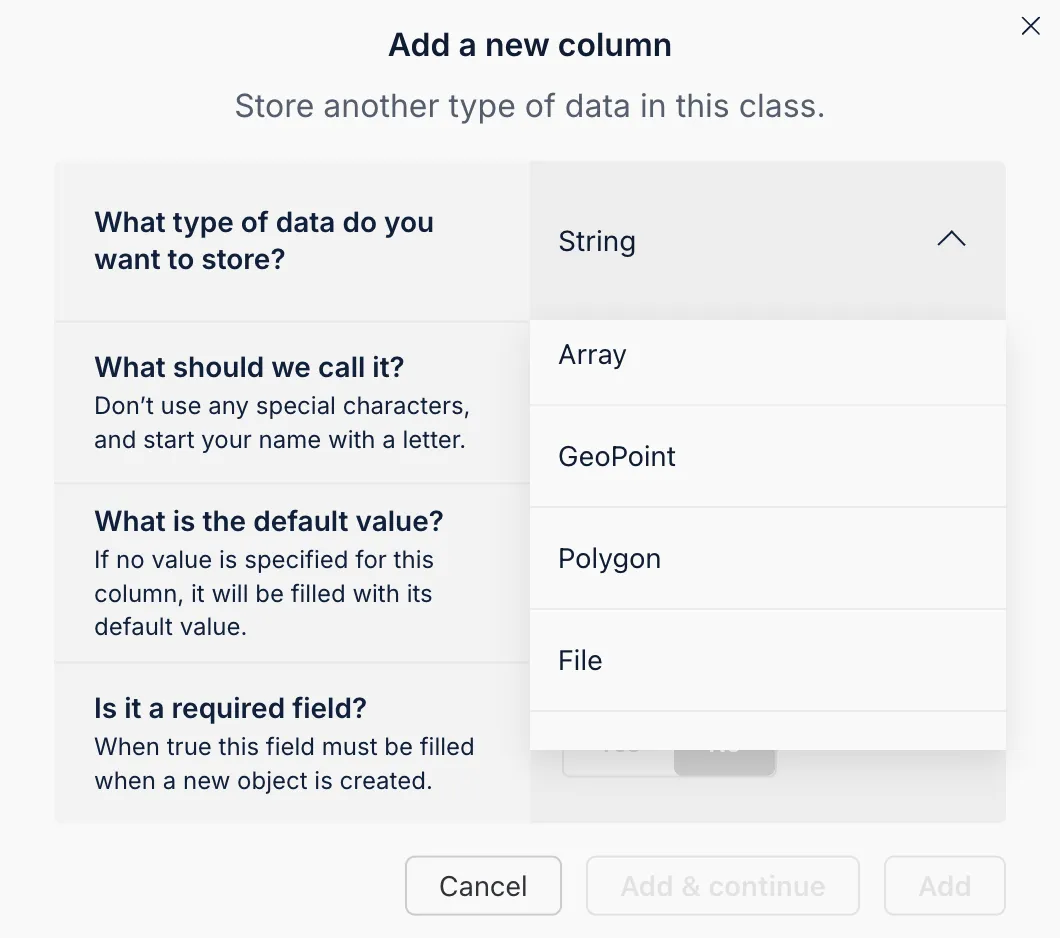
The integrated AI Agent in your Back4app dashboard can automatically generate your data schema based on a description. This tool simplifies the setup process and guarantees that your data model is optimized for CRUD operations.
- Access the AI Agent: Open your Back4app dashboard and locate the AI Agent within your project settings.
- Describe Your Schema: Provide a detailed outline of the classes and fields you need.
- Review and Implement: The AI Agent will propose a schema. Examine the suggested configuration and approve it to apply the changes.
This AI-assisted method saves time and ensures a consistent, optimized data structure.
The Back4app Admin App provides a no-code interface for easy backend data management. Its drag-and-drop interface simplifies CRUD operations such as creating, reading, updating, and deleting records.
- Open the “More” menu on your Back4app dashboard.
- Select “Admin App” and click “Enable Admin App.”
- Set up your admin credentials by creating an initial admin account. This process also establishes predefined roles (e.g., B4aAdminUser) and system classes.
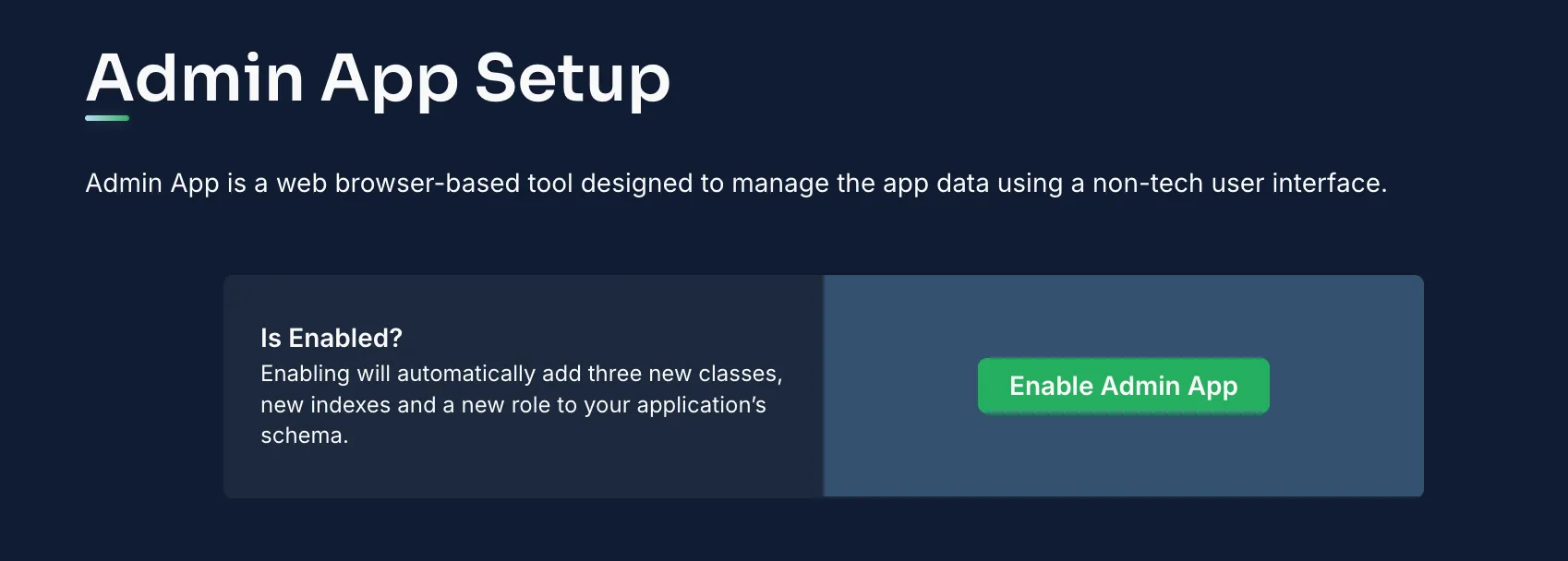
Once activated, sign in to the Admin App to begin managing your app’s data.
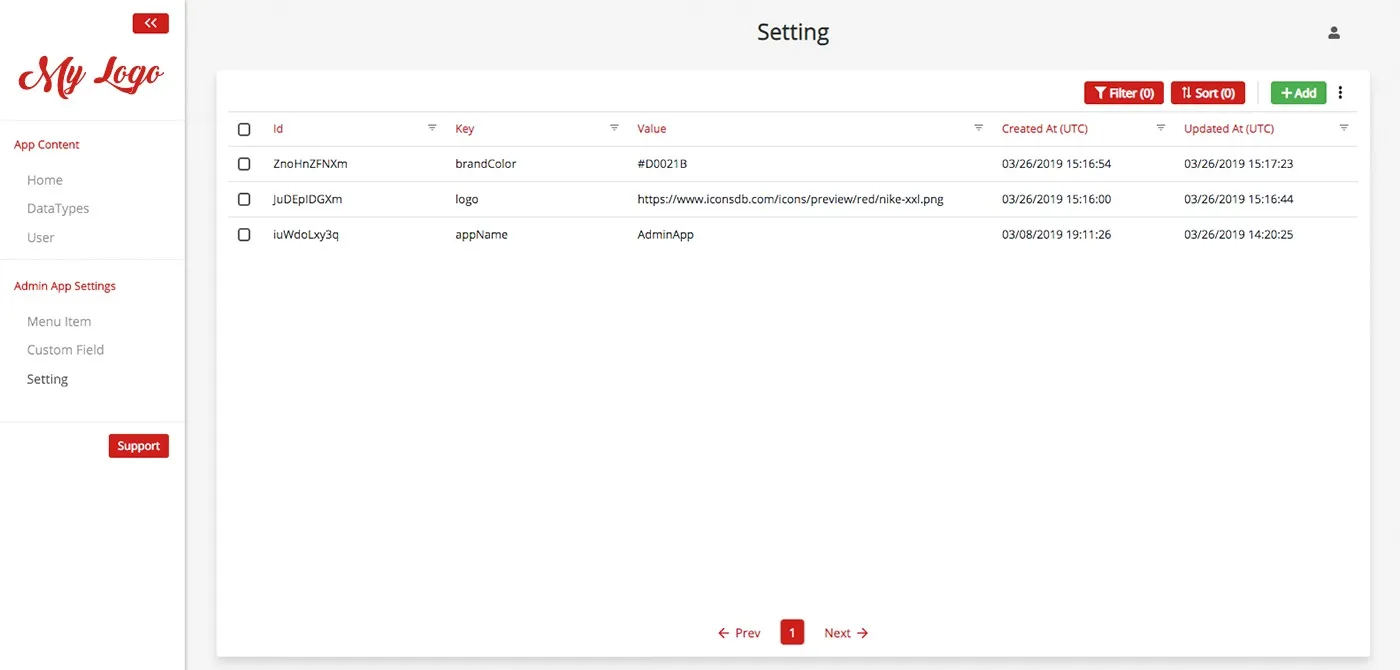
Inside the Admin App, you can:
- Insert New Data: Use the “Add Record” feature within any class (e.g., Items) to create new entries.
- View and Edit Records: Select a record to inspect details or modify fields.
- Delete Records: Remove data entries that are no longer required.
This user-friendly interface streamlines the process of managing your backend.
With your backend ready, the next task is to link your Xamarin application to Back4app.
Add the Parse .NET SDK Dependency: For a Xamarin project, include the Parse .NET SDK via NuGet. Open your NuGet Package Manager and install:
Initialize Parse in Your Xamarin App: Create an initialization file (e.g., ParseInitializer.cs) and configure it as follows:
If the Parse .NET SDK is not preferred, you can implement CRUD operations via REST calls. For instance, to retrieve items using REST in a Xamarin app:
Integrate these API calls within your Xamarin project as necessary.
Secure your data by setting ACLs on your objects. For example, to create an item accessible only by its owner:
Within your Back4app dashboard, configure CLPs to establish default access rules. This ensures that only authenticated users can interact with specific classes.
Back4app utilizes the built-in Parse User class for authentication. In your Xamarin app, manage user registration and login as shown below:
This approach can be extended to include session management, password recovery, and other authentication-related functionalities.
Well done! You have successfully developed a Xamarin-based CRUD application integrated with Back4app. In this tutorial, you:
- Configured a Back4app project named Basic-CRUD-App-Xamarin.
- Designed the necessary data structures for Items and Users.
- Leveraged the Back4app Admin App to manage your data.
- Connected your Xamarin application via the Parse .NET SDK (or REST/GraphQL) to perform CRUD operations.
- Implemented robust security measures including ACLs and CLPs.
- Set up user authentication to manage account creation and login.
- Expand the App Functionality: Consider adding features like advanced filtering, detailed item views, or real-time data updates.
- Enhance Backend Capabilities: Explore cloud functions, third-party integrations, and role-based access controls.
- Further Learning: Visit the Back4app documentation and additional resources to optimize and scale your application.
Happy coding and best of luck with your Xamarin CRUD application!
